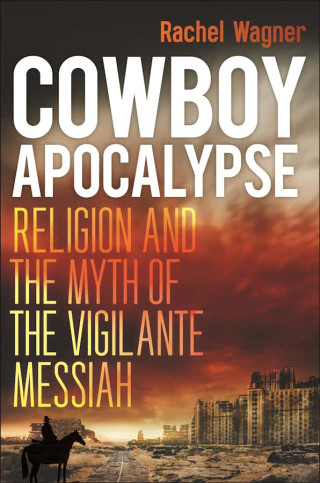The cowboy apocalypse shows up all over, once you know to look for it. You can find it in books (Pat Robertson’s End of the Age, William Forstchen’s One Second After); videogames (the Fallout franchise, the Red Dead Redemption series), television shows (The Walking Dead, Doomsday Preppers), and movies (Red Dawn, Zombieland). While some people dabble in the cowboy apocalypse for fun, the mediated myth of the cowboy apocalypse can also take on real-life form with potentially violent consequences. This story, enlivened by renewed right-wing control of America’s government, has brought what were once fringe apocalyptic notions to mainstream attention, emboldening some apocalyptic Christians to see themselves and their guns as acting for God.
The gun serves as a sacramental object in the cowboy apocalypse, able to exist at once in the past (as a relic of idealized history); in the present (as a sacred object capable of enacting salvation against enemies); and in the future (as necessary for survival in a transformed world). While most of our belongings would be lost in societal collapse, the gun remains central in the cowboy apocalypse’s imagination of the future. The gun is a symbol of certainty, a kind of materialized absolutism. The cowboy apocalypse promises simplification of complex social problems in the form of conviction in what is right and what is wrong, in beliefs about who deserves to live and who should die. After apocalyptic transformation, white men will again be in charge of their families and their communities. Their guns become proof of their virtue.
I talk about the gun as “a ritualized way of asserting dominance, and a means of imagining oneself tasked with saving the world.” To think of a gun sacramentally is to see it as a link between here and a desired world beyond. For some Christians, bread and wine can work sacramentally, as they actually become the body and blood of their sacrificed messiah, a sign of the alignment of heaven and earth. For others, guns can function as a tangible authentication of mystical beliefs about a desired future in which white supremacy is again unchallenged. To shoot can be to act as Christ, to enact judgment on earth before Christ’s triumphal return. Every gun is a little apocalypse.
The cowboy apocalypse is not just a story; it is a foundational myth concealing deeper grief that has yet to be addressed about the attempted genocide of Native Americans and the history of slavery in America. It has deep roots in racist literature from the nineteenth century, penned by representatives of the Ku Klux Klan, and it shows up still today in racist-inspired portraits of zombie hordes attacking more prepared, more civilized, gun-toting white men. The cowboy apocalypse can be expressed in religious or secular forms. And while I didn’t have a name for it, it has always been a part of my life.
